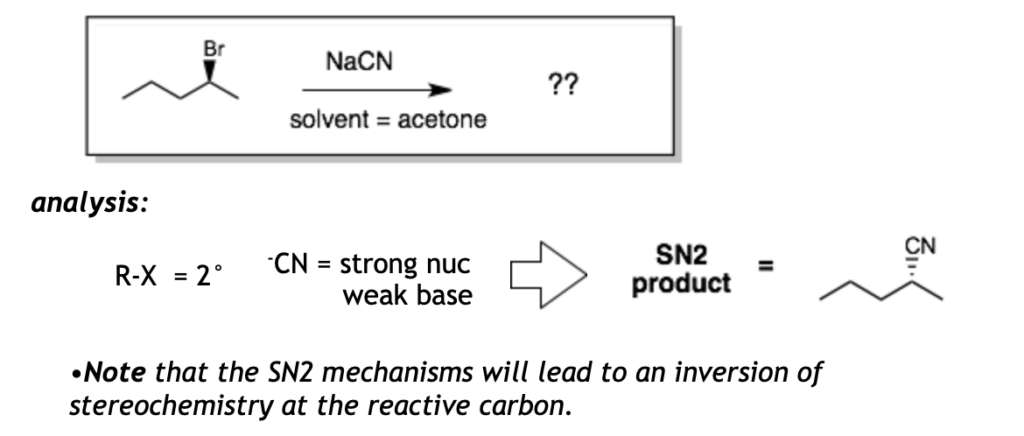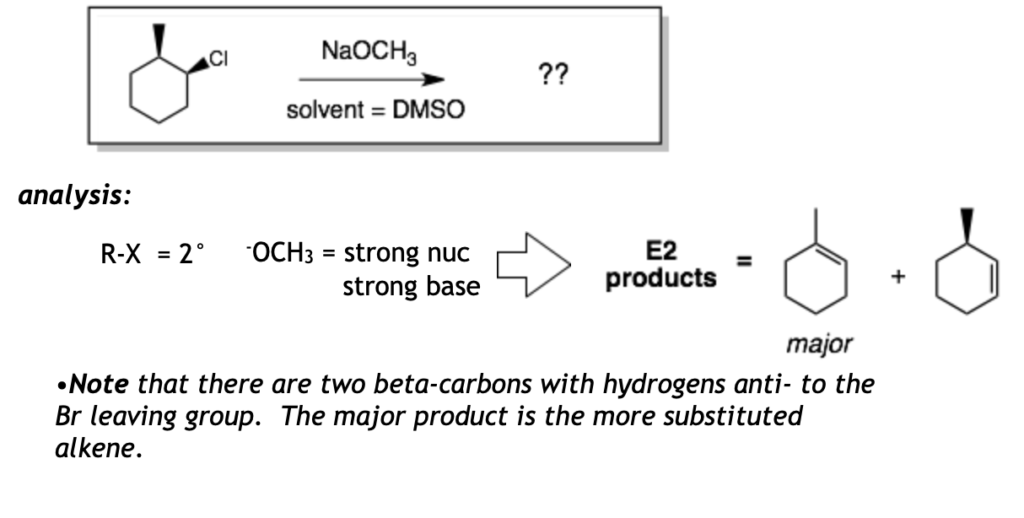Predicting SN1, SN2, E1, and/or E2
Introduction:
The first set of reactions and mechanisms that are commonly taught are the substitution and elimination reactions. Each of these can go by either a one-step (SN2 or E2) or two-step mechanism (SN1 or E1). So overall, there are four possible mechanisms (SN1, SN2, E1, or E2) as well as combinations of mechanisms.

The difficulty is that all four mechanisms have exactly the same reactants: an alkyl halide and a nucleophile/base. Therefore, deciding which of the four mechanisms or combination of mechanisms is operative can be very confusing.
How to:
The keys to deciding the mechanism(s) is to classify the reactivities of the two reactants.
1) Classify the alkyl halide (R-X) as either:
methyl, 1°, 2°, or 3°
2) Classify the nucleophile/base as either a strong or weak nucleophile, strong or weak base, and a bulky or not bulky base. Since nucleophilicity and basicity trends are related, there are only four possible combinations.
a) strong nucleophile and strong base
b) weak (bulky) nucleophile and strong base
c) strong nucleophile and weak base
d) weak nucleophile and weak base
**for more detail on how to classify the nucleophile/base strengths page**
3) Use the flowchart or table below to decide which mechanism or combination of mechanisms will be operative. Either method should give the same answer.


Comments:
1. There is one additional criteria for the E2 mechanism. There must be an anti-beta-hydrogen. This is a hydrogen on the carbon adjacent to the carbon bearing the halide that is on the opposite side of the molecule from the halide.
2.Note that the solvent is not involved in the decision making process. However, the choice of solvent can accelerate the reaction rates of specific mechanisms.
3.Overall, the flowchart and table are vast simplifications. For example, there are cases of mixtures of SN1 and SN2 mechanisms. There also are cases of mixtures of SN2 and E2 mechanisms. However, for the purposes of this class, we will stick to this limited set of combinations and outcomes.
Example 1

Example 2

Example 3

Example 4
